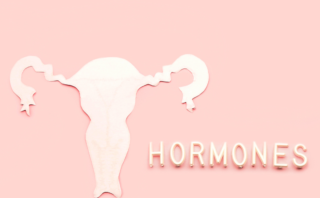When childbirth is initiated with the help of certain medicines or techniques before it naturally happens on its own, is an induction of labor. A pregnant mom may have their labor induced when delivering early is clearly the healthiest choice for themselves or their baby.
There can be some risks associated with inducing labor. The decision to deliver before a due date is and important one. There are a few instances when you might know earlier in your pregnancy that induction is the safest route to a healthy delivery.
Why is Labor Induced?
ACOG (American College of Obstetricians and Gynecologists) recommends labor  induction only when thee are clear health or safety benefits. Some medical reasons that justify initiating an early delivery include:
induction only when thee are clear health or safety benefits. Some medical reasons that justify initiating an early delivery include:
Fetal conditions: If you baby is experiencing certain health conditions, ACOG recommends early delivery. These include:
- Diabetes (gestational or type I and II): ACOG recommends that pregnant women with gestational diabetes or pre-existing diabetes should have labor induced before week 40, especially if they are having trouble managing symptoms or are on medication. Maternal diabetes can put a baby at risk for being overly large, experiencing shoulder injuries during childbirth or being stillborn.
- Hypertension or pre-eclampsia: Uncontrolled high blood pressure during pregnancy can lead to serious or even fatal complications. It’s recommended that pregnant people with severe gestational hypertension or pre-eclampsia be induced early.
- Placental/Uterine Conditions: Having placenta previa, a previous uterine rupture are examples of structural concerns in the womb that might call for an early delivery.
- Post-term pregnancy: A baby who has not been born by 42 weeks gestation is at risk for being stillborn, experiencing shoulder injuries or meconium aspiration in the birth canal or having seizures. For this reason ACOG says that it recommends inducing birth at 42 weeks.
- PROM (premature rupture of membranes): If your water breaks prematurely, your doctor may recommend that you deliver as early as 34 weeks.
How is Labor Induced?
Labor can be induced in several ways and depends on how close you are to your due date and whether you have signs of pending labor. Some of the most common methods, which are often combined include:
- Stripping the membranes: Late in a healthy pregnancy during a vaginal exam your doctor or midwife might insert their finger into your cervix and attempt to separate it from the amniotic sac without breaking your water. This is less than an induction method and more of a way to help approaching labor along. Membrane stripping can prompt your body to release natural chemicals that soften or ripen, your cervix.
- Prostaglandins: Another early step in labor induction is the insertion of cervix-softening prostaglandins into the vagina via a gel or suppository.
- Pitocin: This is a synthetic version of oxytocin which is a natural hormone that starts contractions. Pitocin is given with an IV line and you will monitored to gauge its effectiveness. Dosing can be increased to create a contraction pattern.
- Amniotomy: Docto4rs may break your water artificially after giving you Pitocin if your cervix is thin and dilated. This is done by nicking the amniotic sac so the fluid is released and can stimulate labor.
- Foley bulb: This is a catheter with a balloon that is placed through the cervix and expanded. The pressure from the device promotes dilation and contractions.
At-Home Methods of Labor Induction
Some try at-home methods of labor induction. Some common at-home induction tricks include:
- Castor Oil: This is taken orally in a variety of recipes. It can cause diarrhea so it should be used with the advice of your practitioner.
- Nipple Stimulation: This can include manual or oral stimulation of the nipples. Some use a breast pump to help release natural oxytocin in an attempt to prompt the beginnings of labor.
- Relaxation and Visual Imagery: Whether it brings on labor or not, these are great ways to promote rest which is beneficial at the end of pregnancy and will help you when labor does finally start.
- Sex: Sexual intercourse may be helpful as the semen contains prostaglandins which help to soften the cervix.
What Are Risks of Inducing Labor?
There are some risks of inducing labor before it has naturally started. So talking with your caregiver how the benefits of induction outweigh the potential risks before and induction is schedule. Risk may include:
- Cesarean Delivery: Contractions can be started with medication but your cervix may not be ready to open. Sometimes this can lead to a Cesarean delivery.
- Fetal Distress: Inducing labor may bring on an abnormally high rate of contractions which can cause your baby’s heart to race. Techniques like the use of a Foley bulb catheter have been shown to reduce the chance of excessive contractions.
- Uterine Rupture: The force of labor contractions brough on by Pitocin can result in a tear in the uterus, particularly if you have had a prior c-section.
What to Ask if Labor Induction is Suggested
If your caregiver suggests inducing labor, be sure to ask them to explain why. Here are some suggestions to consider asking when considering an induction:
- Why are you recommending induction of labor?
- Are there any alternatives to inducing?
- What would happen if I were to wait for labor to begin naturally?
- Is there some additional testing that we can do to help guide my decision?
- What does induction of labor look like for your practice? For my situation?
- What methods would be used?
- If there are added risks, what can be done to mitigate them?
- What are the risks of induction for me personally? For my baby?
Hiring a birth doula can help. Doulas are trained in birthing practices and can make suggestions and work with you throughout your pregnancy to help reduce the possibility of an induction. If you require an induction, they can help with working with you through your contractions to help make you more comfortable.
You can learn more about birth services that are available here. If you would like more information or help with birth situations you are concerned about, let’s chat.




